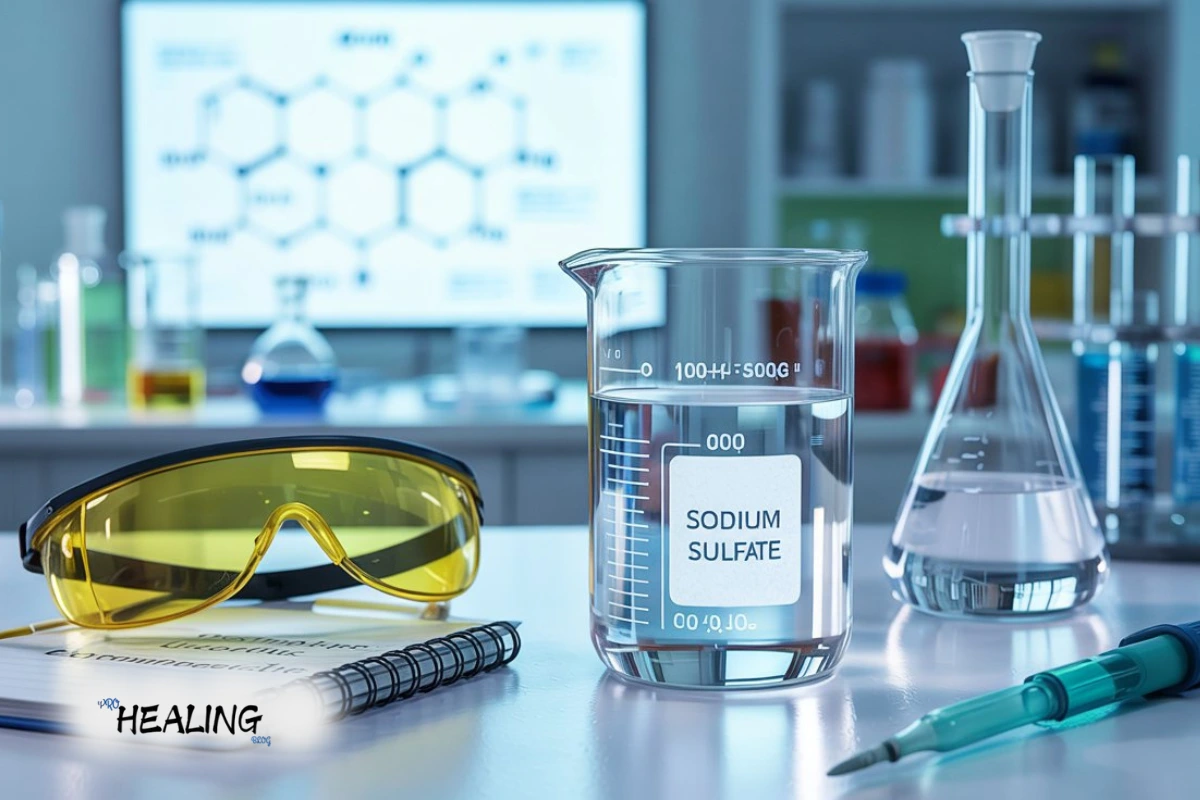Sodium sulfate is a colorless, crystalline substance with good solubility in water. It has poor solubility in most organic solvents except glycerin.
It is a very important product and is found in 12 types of mineral deposits. However only two of them are commercially important: thenardite and mirabilite. The former is a colorless, white mineral. The latter is found in brines, in which case it contains 56% water of crystallization (Glauber’s salt).
Sodium Sulfate: What is it Used for?
Sodium sulfate is used in the textile industry and in the production of glass, textiles, and paper. However, its most important use in Mexico is in the manufacture of detergents.
It is also used in the Solvay process to produce sodium carbonate.
See Also: Cold Medicine for High Blood Pressure: Safe Relief Without the Risk
Risks of Sodium Sulfate
- Health risks: The greatest danger is the irritating nature of the product. The solid is irritating to the eyes, nose, and throat, and is harmful when inhaled. It can cause skin burns.
- Environmental risks: Dangerous if it reaches water intakes.
- Special hazards of the product: The greatest danger of the product lies in the reaction that occurs if it is mixed with strong acids or bases.
Recommendations
- Store the product in a dry place to prevent corrosion of the bag surface and moisture absorption by the product.
- When handling, protect your body, face, hands, and feet with rubber, neoprene, or PVC equipment. Do not touch with bare hands, as this can cause burns.
See Also: Healing Herbs and Medicinal Plants List: Nature’s Remedies
Disposal
To remove sodium sulfate residues , first neutralize the remaining product with a diluted base and then wash with plenty of water.
Anything that cannot be salvaged for recovery or recycling must be managed in an appropriate and approved waste disposal facility. Processing, use, or contamination of this product may change waste management options.
- Environmental precautions: Do not allow to enter water sources and sewers.
- Methods and materials for containing and cleaning up spills: Sweep up the spilled substance and place it in a container; if necessary, moisten the powder to prevent it from dispersing. Remove residue with plenty of water. (Additional personal protection: P2 filter respirator against harmful particles).
See Also: Marjoram Health Benefits: Uses in Medicine & Homeopathy
FAQs
What is sodium sulfate used for?
It serves as a component in the production of detergents, glass, textiles, and paper. It is also involved in the Solvay process for making sodium carbonate.
Is sodium sulfate harmful to health?
Yes, it can cause irritation to the eyes, nose, throat, and skin. Respiratory discomfort may result from inhalation, and burns can occur from direct contact.
What precautions should be taken when handling sodium sulfate?
Use protective equipment like gloves, goggles, and respiratory masks. To prevent moisture absorption, avoid direct contact and keep the product in a dry location
Can sodium sulfate be disposed of in water sources?
No, it must not enter water sources or sewage systems. Before disposal, it should be neutralized using a diluted base and removed with a large amount of water.
Is sodium sulfate environmentally hazardous?
Indeed, sodium sulfate can pose a risk to health if it pollutes water supplies. To reduce environmental risks, proper methods for handling, containing, and disposing of materials should be adhered to.
How should a sodium sulfate spill be cleaned up?
Carefully sweep up the spilled substance, dampen it if needed to avoid dust spread, and put it in a secure container. Residues must be removed using copious amounts of water.


